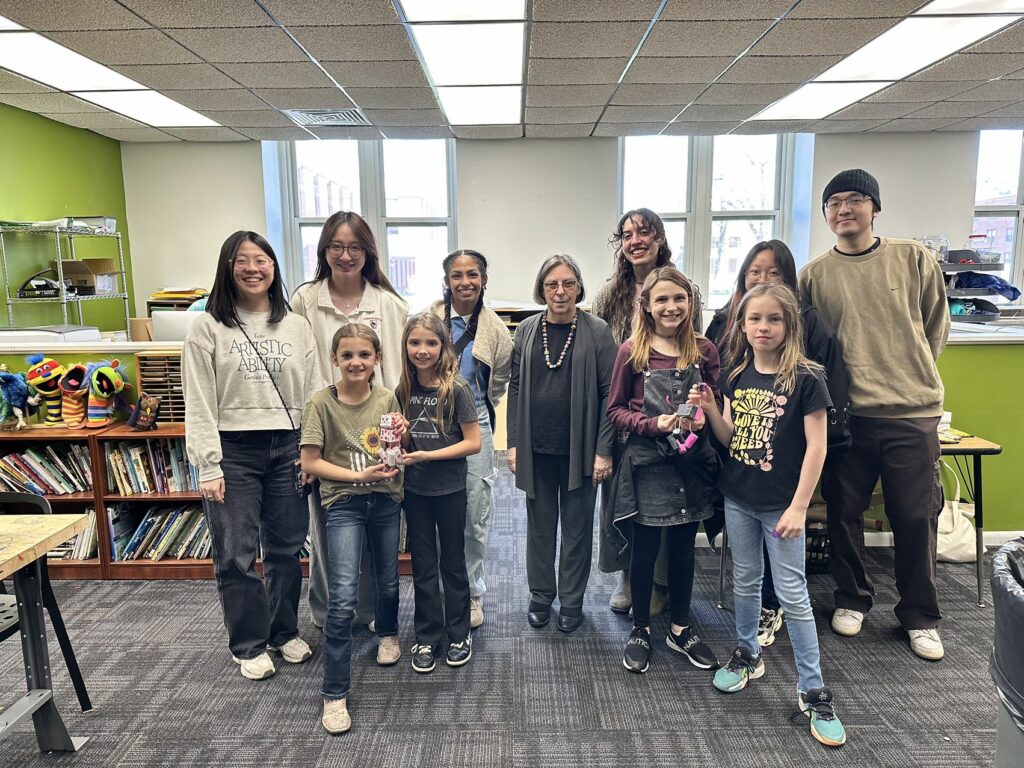Week Eight was an exciting week for the team as we are officially marching into the second half of the semester!
This week, the team had the first playtest with the client at West Liberty University with fourth-grade students. There were several main goals for our playtest and the team hope that this could help our further iterations.
Program Usability
We gathered 13 fourth graders from West Liberty Elementary School to have the playtest with us. We kicked things off by equipping each student with a Chromebook pre-loaded with the program. To set the stage for creative exploration, we played the introduction video to set the scene. The excitement in the room was contagious – they were brimming with ideas for their puppet creations, eagerly discussing possibilities with their peers.

We also had a live demo of the program in order to show them the functions in the software. However, we noticed a dip in focus. This could be attributed to the rapid shift from the animation-rich intro video to a more technical presentation. To address this, we’ve decided to create a more comprehensive introductory video of the UI tutorial. This will not only maintain their initial enthusiasm but also ensure a smoother learning curve for the software. The new video will introduce the core functionalities in a clear and engaging manner, allowing them to grasp the design process intuitively before diving in.

Working in pairs, the students quickly dove into the program’s design interface. Their teamwork skills shone as they collaborated and creatively designed their puppets. It was evident that they were comfortable working together and enjoyed the collaborative aspect of the activity.
Student feedback proved invaluable in uncovering opportunities to enhance the software. We were happy to discover their comfort navigating the program’s interface. Even more exciting was their eagerness to see it evolve. A common thread emerged in their suggestions: a desire for more customization options. Adding accessories and a broader selection of 3D shapes were popular requests. These insights will be at the forefront of our team discussions as we move into our reach goal development.
Challenge: Printing Phase
While our team circulated the room offering assistance, a recurring question emerged. Most student pairs finished their puppet designs and inquired about the next steps, particularly printing. Unfortunately, pre-playtest checks revealed an unexpected hurdle: the West Liberty Elementary Chromebooks couldn’t connect directly to the printer. This meant a detour from the ideal workflow – students would need to save their designs locally and then transfer them to a USB drive for printing, with our team assisting each pair with the download and transfer process.
While this situation presented a natural stopping point, as requested by our client, it still also caused some inconvenience. To streamline the process and manage expectations, we made two solutions:
- Software UI Update: We will modify the program’s wording from “Print” to “Save,” accurately reflecting the action.
- Informative Pop-up: We will implement a warning pop-up that explains the saving process and gently prompts students to seek instructor guidance for printing. This clear communication would prepare them for the next phase while ensuring their designs stayed safe.
This approach aimed to maintain clarity, manage expectations, and minimize the disruption caused by the printing limitations.
Instruction Worksheet
The program also incorporated instructional worksheets designed to guide students. Based on the feedback from our instructor meeting on Monday, we made a more detailed explanations to enhance understanding.
During the playtest, we presented the worksheet to the students’ math teacher, who teaches both fourth and fifth grades. She expressed enthusiasm for the design, particularly the integration of math problems involving proportion, division, and addition. She envisioned this creating a more implicit and enjoyable learning experience. The students echoed this, indicating they enjoyed working with math problems.
However, an interesting observation emerged. Once we closed the program and transitioned to the puppet creation phase, we noticed the students rarely referred back to the worksheets or engaged with the math problems. Their focus shifted towards the free-play aspect, where their creativity truly flourished in designing the puppets.
Student’s Engagement
The students’ dedication to their puppet creations was truly inspiring. Our team was happy to lend a hand when needed, assisting with shape building, folding, and other technical aspects. Recognizing potential problems in the assembly process, we are thinking of creating a comprehensive instructional video. This visual guide, encompassing everything from folding shapes to final assembly, would help students with a clear understanding, potentially reduce the need for printed instructions.
Witnessing the students’ enthusiasm for the program was a true joy. Their imaginations soared as they transformed their ideas into tangible puppet creations.



Next Steps
Next week is GDC week, most of our team will be heading for the conference. The team still made some milestones for the week and will keep working on the project.

